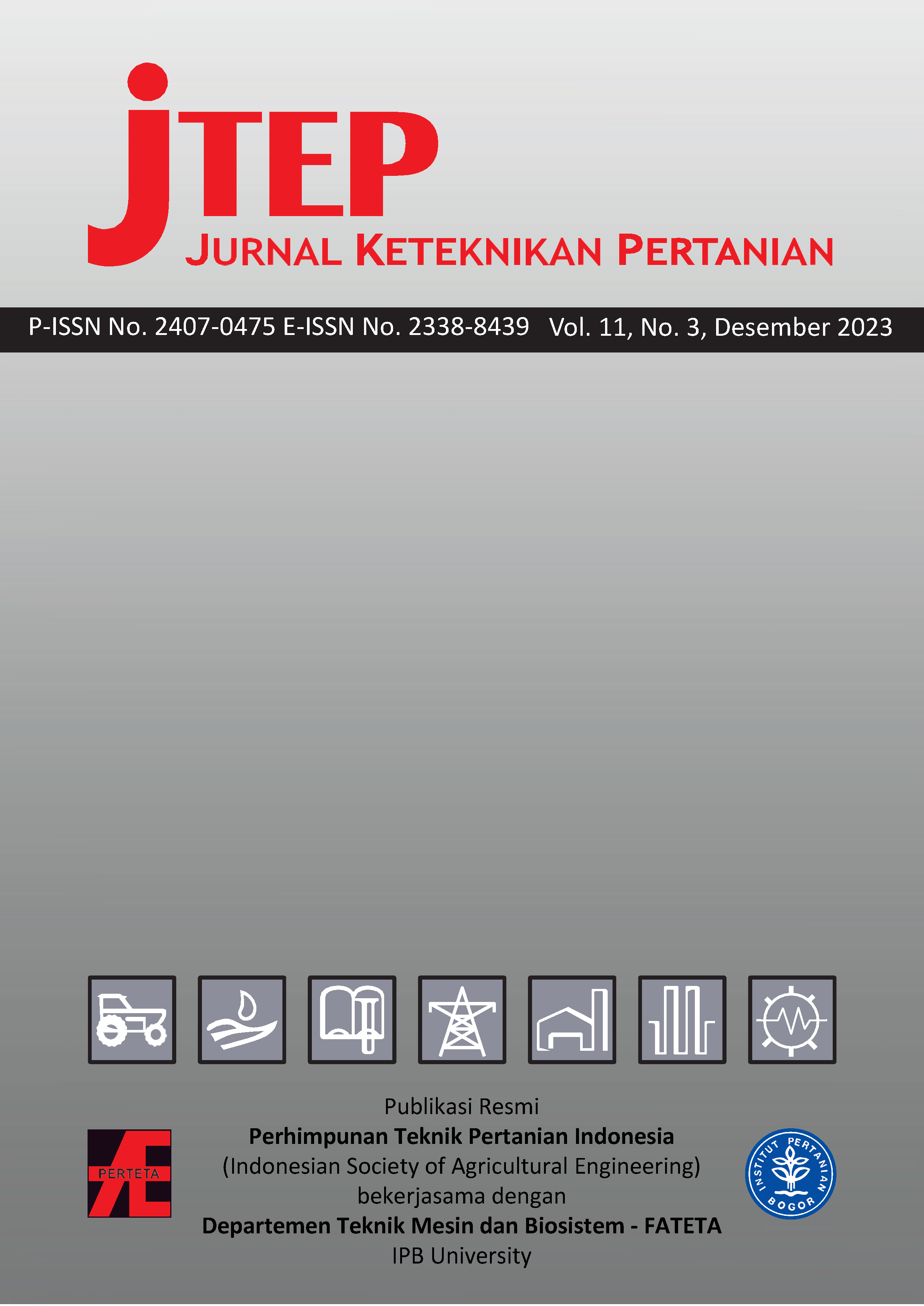Main Article Content
Abstract
Vanilla was generally stored for conditioning for 2-6 months thus triggering microbial growth. Irradiation can be applied to reduce microbes in vanilla export purpose. The aim of this study was to examine the effectiveness of gamma-ray irradiation on quality of cured vanilla and to determine the best irradiation dose with quality can be accepted by consumers. The experimental design was completely randomized factorial design with three replications. The first factor was irradiation dose at three levels namely 10, 15 and 30 kGy and unirradiated (0 kGy) as a control. The second factor was the raw material of cured vanilla in three levels, namely cured vanilla from GHE (greenhouse effect dryer) without further sweating, vanilla from GHE dryer with four nights further sweating, and vanilla drying out by farmers. Irradiation was given to the cured vanilla after stored for two months. Quality parameter testing was carried out before and after irradiation on packaged samples. A dose at 10 kGy was found effective in reducing microbiological contamination on cured vanilla without and with further sweating according to SNI. Cured vanilla by farmers requires 15 kGy to reduce contamination. The irradiation dose had no significant effect on weight loss, water and vanillin content of cured vanilla. Irradiation increased the value of L* and chroma but the panelists' preference for vanilla color was still worth 4 (rather like) to 30 kGy. Irradiation increased the panelists' preference for aroma from a slight dislike (3) to a slight liking (4) after irradiation.
Keywords
Article Details

This work is licensed under a Creative Commons Attribution-ShareAlike 4.0 International License.
Authors submitting manuscripts should understand and agree that copyright of manuscripts of the article shall be assigned/transferred to Jurnal Keteknikan Pertanian. This work is licensed under a Creative Commons Attribution-ShareAlike 4.0 International License (CC BY-SA) where Authors and Readers can copy and redistribute the material in any medium or format, as well as remix, transform, and build upon the material for any purpose, but they must give appropriate credit (cite to the article or content), provide a link to the license, and indicate if changes were made. If you remix, transform, or build upon the material, you must distribute your contributions under the same license as the original.
